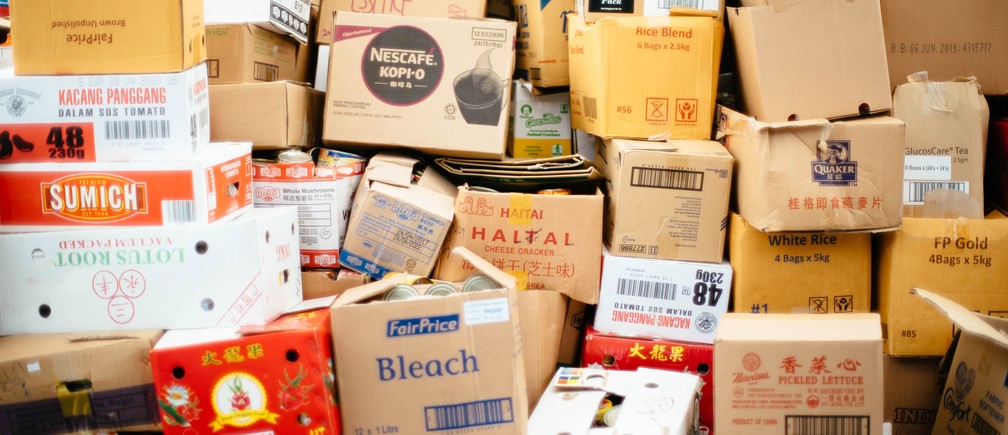In today’s rapidly expanding e-commerce landscape, the sight of small items delivered in disproportionately large boxes has become increasingly common. This practice, while often frustrating for consumers, is driven by several logistical and operational considerations. Companies use oversized boxes to standardize packaging processes, ensure item protection during transit, and streamline warehouse operations. However, the environmental and economic results of this approach are significant, leading to increased waste and higher shipping costs. As online shopping continues to grow, the need to address the inefficiencies and environmental impact of oversized packaging becomes ever more pressing.

Many major companies are frequently observed utilizing oversized boxes for small goods, contributing to this widespread issue. E-commerce giants like Amazon and Walmart often employ larger-than-necessary packaging for a variety of reasons, including inventory management and shipment protection. Similarly, tech companies like Apple and Dell have been known to ship small electronic accessories in large boxes, prioritizing product safety and branding considerations. Even fashion retailers such as Zara and H&M occasionally resort to oversized packaging to accommodate standard shipping practices and ensure their products arrive in pristine condition. These practices, while beneficial for operational efficiency, underscore the urgent need for innovative solutions to balance logistics with sustainability.
The use of large packaging for small goods is often driven by a blend of logistical efficiency and marketing strategies. Retailers frequently rely on standardized box sizes to streamline packaging processes, reducing the need for customized solutions and simplifying warehouse operations. This standardization can lead to the use of oversized boxes for smaller items, ensuring that the packaging process is quick and cost-effective. Additionally, large packaging provides better protection during transit, reducing the risk of damage and returns, which can be costly for businesses.
Beyond logistics, companies also use large packaging to enhance customer satisfaction and create a more attractive unboxing experience. A larger box can make a delivery feel more substantial and valuable, positively impacting the customer’s perception of the product and the brand. However, this practice often overlooks the environmental impact, as the excess materials contribute to waste and a larger carbon footprint, underscoring the need for more sustainable packaging solutions.
The use of oversized boxes for small goods significantly exacerbates environmental issues. Excessive packaging leads to increased waste, with surplus cardboard and packing materials often ending up in landfills. This practice also heightens the carbon footprint of shipping, as larger packages occupy more space in delivery vehicles, necessitating more trips and higher fuel consumption. Moreover, the production of additional packaging materials consumes more natural resources and energy. As the volume of e-commerce grows, these environmental impacts intensify, underscoring the urgent need for more sustainable packaging practices to mitigate waste and reduce carbon emissions.
The economic implications of using oversized boxes for small goods are multifaceted, impacting both retailers and consumers. One primary concern is the increased cost of packaging materials. Larger boxes require more cardboard and additional packing materials such as bubble wrap or air pillows to secure small items. These extra materials not only drive up costs for retailers but also contribute to inefficiencies in inventory management and storage. The increased bulk can strain supply chains, requiring more warehouse space and complicating logistics.
Additionally, shipping costs are significantly affected by oversized packaging. Carriers often calculate shipping rates based on the dimensional weight of a package, meaning that larger boxes incur higher shipping fees, even if the actual weight of the item is minimal. This practice can lead to inflated shipping costs that are either absorbed by the retailer, cutting into profit margins, or passed on to the consumer, potentially deterring purchases. Furthermore, the environmental cost, while not always immediately visible in economic terms, represents a long-term financial burden. The overuse of resources and increased carbon footprint associated with oversized packaging contribute to environmental degradation, which has broader economic repercussions for society as a whole. Balancing cost-efficiency with sustainable practices is thus an essential challenge for the future of e-commerce.
While the needs behind oversized packaging can’t be ignored, there’s a wave of innovation tackling this environmental and economic burden. Biodegradable and compostable materials like mushroom mycelium or plant-based starches are offering a sustainable alternative to traditional cardboard. Additionally, right-sized, inflatable packaging adapts to product shape, minimizing wasted space. The world of design is also offering solutions. Adjustable boxes with built-in dividers or custom packaging shape to product shape eliminate excess space. Flat-pack designs that fold flat for storage and assembly further reduce transportation and storage needs. Technology is playing its part too. 3D printing on demand allows for custom packaging creation at fulfilment centres, eliminating pre-sized boxes entirely. Artificial intelligence can optimize box sizes based on product dimensions and shipping data, while robotic packing systems minimize human error and waste. Collaboration is key as well. Retailers working with manufacturers to design products that ship efficiently and platforms connecting businesses with used packaging materials can significantly reduce reliance on new materials. Finally, consumer refill and return programs offer a sustainable alternative to single-use packaging. These innovative solutions pave the way for a future where delivery boxes are right-sized, sustainable, and efficient.
Strong policy and regulation are imperative to address the environmental impact of oversized packaging in e-commerce. Governments and regulatory bodies must enforce stringent guidelines to curb excessive packaging waste and incentivize sustainable practices. This may involve implementing penalties for non-compliance, promoting the use of eco-friendly materials, and setting standards for packaging efficiency. By holding businesses accountable and fostering a regulatory environment that prioritizes environmental stewardship, policymakers can drive meaningful change across the industry. Additionally, financial incentives and tax breaks for companies adopting sustainable packaging methods can encourage widespread adoption and pave the way for a more environmentally conscious e-commerce sector.
In conclusion, addressing the issue of small goods delivered in oversized boxes demands a concerted effort from all stakeholders. By prioritizing sustainability in packaging practices, businesses can enhance efficiency, reduce costs, and mitigate environmental impact, fostering a more responsible and resilient e-commerce ecosystem for future generations.
Written by Ansh C Vachhani



